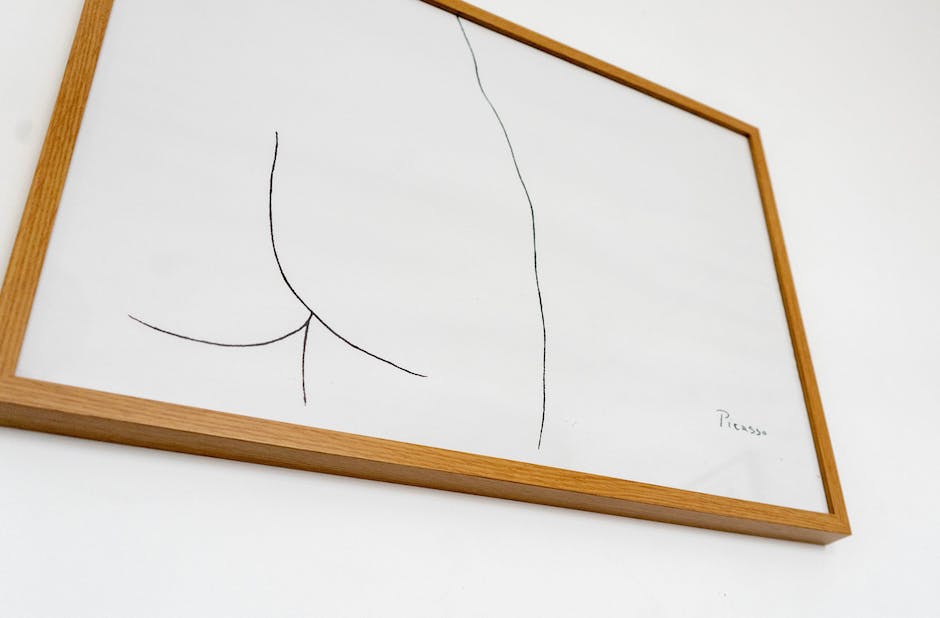Table of Contents
Unleashing the Boundaries of Art: Pablo Picasso’s Global Legacy
Introduction
Pablo Picasso, a Spanish painter, sculptor, printmaker, ceramicist, and stage designer, is widely regarded as one of the most influential artists of the 20th century. His innovative artistic style and groundbreaking approach to art have left a lasting impact on the world of modern art. Picasso’s global legacy is characterized by his ability to push the boundaries of traditional art, challenge conventional norms, and inspire countless artists across the globe. This introduction explores the man behind modern art and delves into the profound and enduring impact of Picasso’s artistic contributions.
Picasso’s Early Life and Influences

Pablo Picasso, one of the most influential artists of the 20th century, left an indelible mark on the world of art. Born on October 25, 1881, in Malaga, Spain, Picasso’s early life and influences played a crucial role in shaping his artistic journey.
Growing up in a creative environment, Picasso’s father, José Ruiz y Blasco, was an artist and art professor. His father’s passion for art undoubtedly had a profound impact on young Picasso, who showed an early aptitude for drawing. By the age of seven, he had already surpassed his father’s skills, a testament to his innate talent.
Picasso’s formal art education began at the age of ten when he enrolled in the School of Fine Arts in Barcelona. Here, he honed his technical skills and explored various artistic styles. It was during this time that he encountered the works of the great masters, such as El Greco and Francisco Goya, who would later influence his own artistic style.
In 1900, Picasso moved to Paris, the epicenter of the art world, where he was exposed to a vibrant and diverse artistic community. This move marked a turning point in his career, as he began to experiment with different styles and techniques. He immersed himself in the avant-garde art scene, rubbing shoulders with fellow artists and intellectuals who challenged traditional artistic norms.
One of Picasso’s most significant influences during this period was the African art he encountered at the Musée d’Ethnographie du Trocadéro. The bold and expressive forms of African masks and sculptures captivated Picasso, leading him to incorporate elements of African art into his own work. This infusion of African aesthetics would become a defining characteristic of his groundbreaking style.
Another pivotal influence on Picasso’s early career was his friendship with Georges Braque. Together, they developed the revolutionary art movement known as Cubism. Inspired by the fragmentation of form and multiple perspectives, Picasso and Braque sought to deconstruct traditional notions of representation. Their collaboration resulted in the creation of iconic works that challenged the boundaries of art.
Picasso’s personal life also played a significant role in shaping his artistic journey. His relationships with women, particularly Fernande Olivier and Dora Maar, influenced the themes and emotions depicted in his work. From the joyous depictions of his early love affairs to the anguish and turmoil of his later years, Picasso’s personal experiences were intricately intertwined with his artistic expression.
Throughout his career, Picasso’s work evolved and adapted to the changing times. From his Blue and Rose periods to his exploration of Surrealism and Neoclassicism, Picasso constantly pushed the boundaries of artistic expression. His ability to reinvent himself and embrace new styles ensured his relevance and enduring legacy.
Today, Picasso’s influence can be seen in the work of countless artists worldwide. His innovative approach to art continues to inspire and challenge artists to think beyond conventional boundaries. From his early life in Spain to his groundbreaking contributions to modern art, Picasso’s global legacy is a testament to his unparalleled talent and unwavering dedication to his craft.
Picasso’s Revolutionary Artistic Style
Pablo Picasso, one of the most influential artists of the 20th century, revolutionized the world of art with his unique and groundbreaking style. His innovative approach to painting and sculpture challenged traditional artistic conventions and paved the way for the development of modern art. Picasso’s artistic style, characterized by its boldness, abstraction, and fragmentation, continues to inspire and captivate audiences worldwide.
Picasso’s artistic journey began in his early years in Spain, where he showed exceptional talent and a deep passion for art. He received formal training at the Royal Academy of San Fernando in Madrid but quickly diverged from the academic teachings. Instead, he sought inspiration from the works of the old masters, such as El Greco and Francisco Goya, as well as from the vibrant street life of Barcelona.
In his early works, Picasso experimented with various styles, including realism and impressionism. However, it was during his Blue Period, which lasted from 1901 to 1904, that he began to develop his distinctive artistic voice. During this period, Picasso predominantly used shades of blue to depict melancholic and somber subjects, reflecting his own personal struggles and the social issues of the time.
Following the Blue Period, Picasso entered his Rose Period, characterized by warmer colors and a shift towards more optimistic themes. It was during this period that he started to incorporate elements of African and Iberian art into his work, which would later become a defining feature of his style. Picasso’s fascination with African masks and sculptures led him to explore the concept of primitivism, challenging the Eurocentric notions of beauty and aesthetics prevalent in Western art.
However, it was Picasso’s groundbreaking creation, Les Demoiselles d’Avignon, completed in 1907, that truly marked a turning point in his artistic career. This painting, depicting five nude female figures in a fragmented and distorted manner, shocked the art world with its radical departure from traditional representation. Les Demoiselles d’Avignon is considered the precursor to Cubism, a movement that Picasso co-founded with Georges Braque.
Cubism, which emerged in the early 20th century, revolutionized the way artists approached representation. Picasso and Braque sought to depict objects from multiple viewpoints simultaneously, breaking them down into geometric shapes and reassembling them in a fragmented manner. This new approach challenged the notion of a single fixed perspective and opened up new possibilities for artistic expression.
Picasso’s exploration of Cubism continued throughout his career, leading to the development of Analytical Cubism and later Synthetic Cubism. In Analytical Cubism, Picasso and Braque deconstructed objects into multiple facets, creating complex and abstract compositions. Synthetic Cubism, on the other hand, involved the use of collage and assemblage techniques, incorporating everyday objects and materials into the artwork.
Picasso’s revolutionary artistic style not only transformed the world of painting but also had a profound impact on sculpture, ceramics, and even literature. His influence can be seen in the works of countless artists who followed in his footsteps, including Juan Gris, Fernand Léger, and Salvador Dalí. Picasso’s legacy continues to inspire contemporary artists, and his works are celebrated in museums and galleries around the world.
In conclusion, Pablo Picasso’s artistic style was a radical departure from traditional representation, challenging the conventions of his time. His exploration of Cubism and his innovative use of color, form, and perspective revolutionized the world of art and paved the way for the development of modern art. Picasso’s legacy as the man behind modern art is a testament to his enduring influence and his status as one of the greatest artists of all time.
Picasso’s Impact on Modern Art Movements
Pablo Picasso, one of the most influential artists of the 20th century, left an indelible mark on the world of modern art. His innovative approach and groundbreaking techniques revolutionized the art world, inspiring countless artists and shaping various art movements. Picasso’s impact on modern art movements is undeniable, as his work continues to resonate with audiences worldwide.
One of the most significant contributions Picasso made to modern art was his role in the development of Cubism. Alongside Georges Braque, Picasso pioneered this revolutionary movement, which sought to depict objects from multiple perspectives simultaneously. By breaking down forms and reassembling them in abstract and geometric ways, Picasso challenged traditional notions of representation. Cubism became a catalyst for other avant-garde movements, such as Futurism and Constructivism, which embraced the fragmentation and abstraction of forms.
Picasso’s exploration of form and perspective extended beyond Cubism. He constantly pushed the boundaries of artistic expression, experimenting with different styles and techniques. This versatility allowed him to contribute to various art movements, including Surrealism. Picasso’s ability to tap into the subconscious and depict dreamlike imagery greatly influenced Surrealist artists like Salvador Dalí and René Magritte. His work served as a bridge between the rational and irrational, blurring the lines between reality and fantasy.
Furthermore, Picasso’s impact on modern art can be seen in his engagement with African and tribal art. During the early 20th century, Picasso encountered African masks and sculptures, which had a profound effect on his artistic vision. He was captivated by their simplicity, boldness, and spiritual power. Picasso incorporated elements of African art into his own work, infusing it with a primal energy and rawness. This fusion of influences gave birth to the movement known as Primitivism, which celebrated the authenticity and vitality of non-Western art.
Picasso’s influence extended beyond the realm of painting. He also made significant contributions to sculpture and ceramics. His sculptures, characterized by their abstract and fragmented forms, challenged traditional notions of three-dimensional representation. Picasso’s ceramic works, on the other hand, showcased his playful and experimental nature. He transformed everyday objects into whimsical and imaginative creations, blurring the boundaries between art and craft.
The impact of Picasso’s work on modern art movements can still be felt today. His legacy continues to inspire contemporary artists, who draw upon his innovative spirit and willingness to break artistic conventions. Picasso’s influence can be seen in the works of artists like Jean-Michel Basquiat, who embraced a similar approach to form and composition. Additionally, Picasso’s ability to seamlessly transition between different styles and mediums serves as a reminder of the importance of artistic exploration and experimentation.
In conclusion, Pablo Picasso’s impact on modern art movements cannot be overstated. His contributions to Cubism, Surrealism, Primitivism, and beyond have shaped the course of art history. Picasso’s innovative techniques and willingness to challenge artistic conventions continue to inspire artists worldwide. His legacy serves as a testament to the power of artistic exploration and the enduring influence of one man’s creative vision.
Picasso’s Enduring Legacy and Influence in Contemporary Art
Pablo Picasso, one of the most influential artists of the 20th century, left an indelible mark on the world of art. His innovative style and groundbreaking techniques revolutionized the art world, and his legacy continues to shape contemporary art today.
Picasso’s enduring legacy can be seen in the work of countless artists who have been inspired by his bold and experimental approach. His ability to push the boundaries of traditional art forms and challenge conventional norms paved the way for new artistic movements and styles. From Cubism to Surrealism, Picasso’s influence can be seen in a wide range of artistic expressions.
One of the key aspects of Picasso’s legacy is his ability to capture the essence of the human experience. His portraits and figures are not mere representations of physical appearances, but rather explorations of the complexities of human emotions and relationships. Picasso’s ability to convey depth and emotion through his art resonates with contemporary artists who seek to explore the human condition in their work.
Furthermore, Picasso’s use of color and form continues to inspire artists today. His bold and vibrant palette, combined with his innovative use of shapes and lines, created a visual language that transcended traditional artistic conventions. This language of form and color has been adopted and adapted by contemporary artists who seek to create visually striking and thought-provoking works of art.
Picasso’s influence is not limited to the realm of fine art. His impact can also be seen in popular culture, design, and fashion. His iconic images, such as the “Weeping Woman” or “Guernica,” have become cultural touchstones, recognized and referenced by people from all walks of life. Picasso’s ability to create images that resonate with a wide audience speaks to his universal appeal and enduring relevance.
In addition to his artistic contributions, Picasso’s personal life and persona have also left a lasting impression on contemporary art. His bohemian lifestyle and unconventional approach to relationships challenged societal norms and inspired artists to embrace their own individuality and authenticity. Picasso’s ability to live and create on his own terms serves as a powerful reminder to contemporary artists to stay true to themselves and their artistic vision.
Picasso’s global legacy is further solidified by the numerous exhibitions and retrospectives dedicated to his work. Museums and galleries around the world continue to showcase his art, ensuring that future generations have the opportunity to experience and appreciate his genius. These exhibitions not only celebrate Picasso’s artistic achievements but also serve as a reminder of his ongoing influence and relevance in the art world.
In conclusion, Pablo Picasso’s legacy in contemporary art is undeniable. His innovative style, ability to capture the human experience, and his impact on popular culture have solidified his position as one of the most influential artists of all time. Picasso’s enduring legacy continues to inspire and shape the work of contemporary artists, ensuring that his contributions to the art world will be celebrated for generations to come.
Q&A
1. Who was Pablo Picasso?
Pablo Picasso was a Spanish painter, sculptor, printmaker, ceramicist, and stage designer who is widely regarded as one of the most influential artists of the 20th century.
2. What is Picasso’s global legacy?
Picasso’s global legacy lies in his groundbreaking contributions to modern art, his innovative use of various artistic styles and techniques, and his ability to push the boundaries of artistic expression.
3. What are some of Picasso’s most famous works?
Some of Picasso’s most famous works include “Guernica,” “Les Demoiselles d’Avignon,” “The Weeping Woman,” “The Old Guitarist,” and “The Blue Period.”
4. How did Picasso influence modern art?
Picasso’s influence on modern art can be seen in his role as a co-founder of the Cubist movement, his exploration of multiple artistic styles, his use of unconventional materials, and his ability to challenge traditional artistic norms.
Conclusion
In conclusion, Pablo Picasso’s global legacy as the man behind modern art is undeniable. His innovative and groundbreaking artistic style revolutionized the art world, leaving a lasting impact that continues to influence artists and art enthusiasts worldwide. Picasso’s ability to constantly push boundaries and challenge traditional artistic norms has made him one of the most influential and celebrated artists of the 20th century. His legacy extends beyond his artistic achievements, as his work continues to inspire and provoke thought, making him a true icon of modern art.




